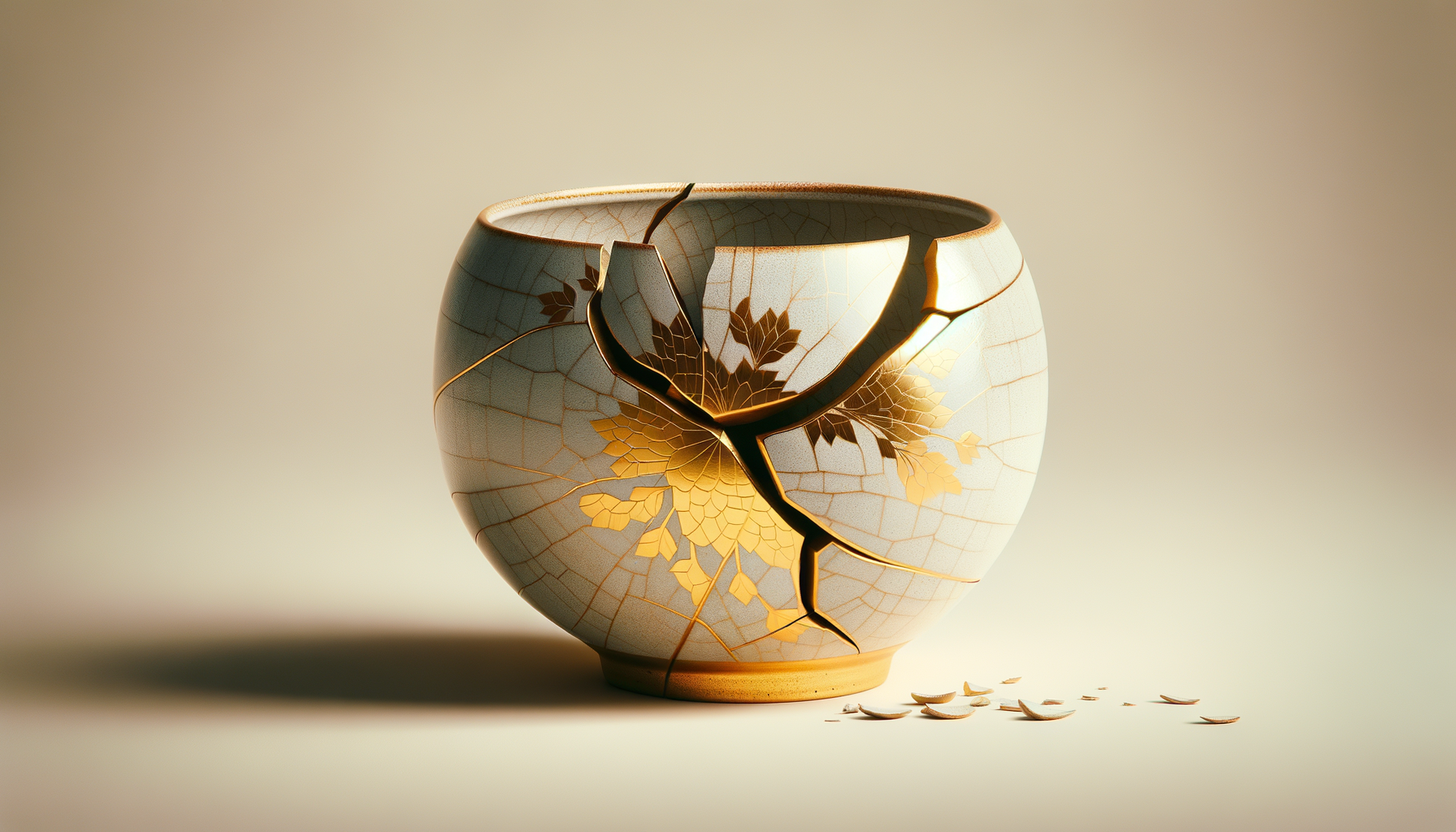“Embracing Flaws: Enhancing Aesthetics through Kintsugi – The Japanese Art of Golden Repair”

Have you ever come across something broken, only to discard it as useless or not as beautiful as it once was? You may want to re-evaluate that perspective because there’s a captivating Japanese philosophy that not only highlights the imperfections but also emphasizes their beauty – this is known as Kintsugi, the art of precious scars.
The Art of Embracing Flaws
Kintsugi, literally translates to ‘golden joinery’, is a unique Japanese art form that accentuates the beauty of broken ceramics and pottery. Far from hiding the breakage, Kintsugi uses it as an opportunity to introduce something exquisite to the product, turning flaws into elegant, golden features.
Theory Behind Kintsugi
At the heart of Kintsugi is an inherent appreciation for the imperfect, drawing heavily from the Japanese philosophy of Wabi-Sabi, which values authenticity and celebrates imperfection. Wabi-Sabi relates closely to the Zen Buddhism principle of focusing on the present, acknowledging life’s impermanence, and recognizing that the most profound beauty is inherently imperfect, impermanent, and incomplete.
The Kintsugi Art Process
The process of Kintsugi is much more than mere physical repair; it is a transformation. Beginning with broken pottery pieces, a craftsman uses a lacquer derived from the sap of the Asian urushi tree – known for its durability and finish – to restore the pieces. The urushi lacquer is mixed with a powdered gold, silver, or platinum, and then used to bond the fractured pieces back together. The resultant restored pottery is not only functional again but often more visually appealing.
Kintsugi’s Impact on Home Decor and Improvement
While Kintsugi primarily focuses on mending broken pottery, the ethos and visibility of the technique are finding their way into modern home decor and design. You might see Kintsugi- inspired furniture, lighting fixtures, and even wall treatments, which all scream ‘flaws are beautiful’.
Moreover, Kintsugi’s concept serves as a brilliant analogy for home improvement and renovation. It invariably involves revamping, remolding, and, at times, breaking and fixing things anew – but always with the objective to create something more beautiful.
Broken is Beautiful
Your home, much like a Kintsugi piece, has a history etched into every inch. Be it the fading wall paint, the worn-out upholstery, or the creaking wooden step, every imperfection narrates a story. Instead of hiding them, you can celebrate them. Introduce Kintsugi into your household by remixing your decor, highlighting, and honoring the various wear and tear around your home. This will lend an incomparable charm and character to your abode and bring your refurbishment to a whole new level.
Kintsugi in Home and Lifestyle Implementation
The concept of Kintsugi is not confined solely to sculpture or remodeling. Its principles can be applied to our lifestyle too, as a way of dealing with the breaks and knocks of life. Just as with Kintsugi pottery, the idea is not to hide the damage but to showcase it boldly, hence illustrating that there is strength in fragility and beauty in imperfections.
The Band-Aid Solution Philosophy
There is a valuable teaching embedded in Kintsugi: it offers an alternative perspective towards things we would typically consider ‘broken.’ In the same vein, repairing fractured relationships, mending our lives after a setback doesn’t mean we are weak or damaged – rather, it signifies resilience, transformation, and the ability to become even more robust and beautiful.
Conclusion
Kintsugi provides a perspective that shifts away from the perception that only ‘new’ is ‘better.’ It shows us that beauty can also be found in restoration, resilience, and, most importantly, the ability to embrace the imperfect. From home decor to personal development – the golden seams of Kintsugi are a poignant reminder that broken can indeed be beautiful. So, the next time you are dealing with something broken – a piece of pottery, a part of your home, or an aspect of your life – remember to see it through the lens of Kintsugi. Fix it, enhance it, and let its golden stitches tell its glorious tale of resilience and renewal.
